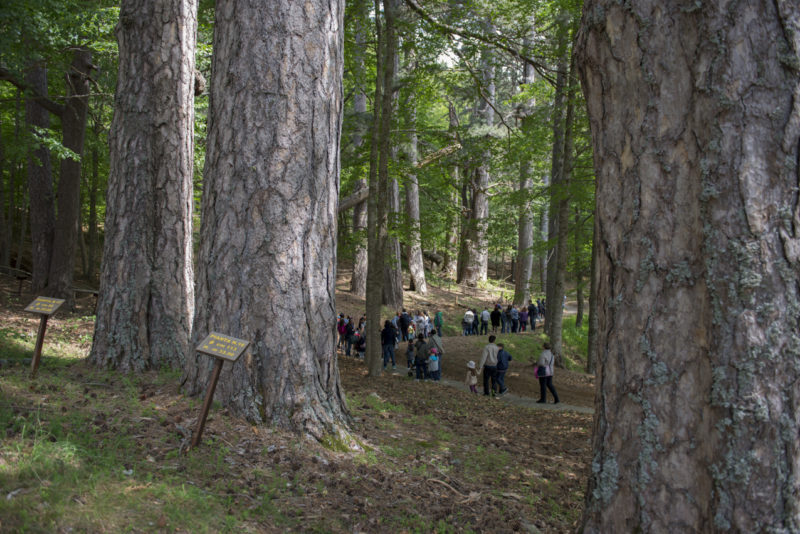
I giganti della Sila
This post is also available in:
 Italiano (Italian)
Italiano (Italian)
Pinus nigra ssp. calabrica (Pinaceae)
Laricio or Calabrian pines are an endemic species of Southern Italy.
52 specimens of this species, called the giants of the Sila, are inside “ Riserva Naturale Biogenetica di Fallistro”in the area of Sila Grande at an height of 1420 meters. They are part of a mixed forest together with aspens, beech trees and Sycamore Maples.
The reserve is an area where this specie is protected and studied.
The dimensions of the 52 specimens differ from one another, the trunk circumference values are between 1.87 m and 7.1 m, while the height values vary between 35 and 43 m.
The estimated age of the group is around 350 years.
How to reach them:
“Riserva Naturale Biogenetica di Fallistro” is located in the municipality of Spezzano della Sila (CS), which is easily reached by cars, trains and buses (for further information look at the official website of the reserve).
Botanical characteristics of the Laricio Pine:
Laricio pines are a subspecies of Pinus nigra and are an endemic species of the inferior mountain are of Sila, Aspromonte and Etna where they form pine woods on the southern slopes on siliceous rocks. They are evergreen trees which can reach 45-50 m of height. These trees can survive with small quantities of soil and water at their disposal and are considered a pioneer specie for these characteristics. Their trunk can have no branches for the first 30-40 m, the younger specimens have branches horizontal to the soil, while older trees present curved branches which point upwards. The cortex is formed of greyish plates. Their excellent wood was used to build vessels. Many Laricio pines, wich formed thick woods on Sila, were abated during the last century in the war period to get firewood.
Certain trees still show the marks of the incisions made to extract resin, which was used as fuel for torches and as insulation in the production process of white spirit. The pines, which are small, contain pine nuts which are inedible for humans, when they open they look like the pines of larches, and because of this the specie has been given this name.
This post is also available in:
 Italiano (Italian)
Italiano (Italian)
Contatti
87058 Croce di Magara()
